Electromagnetism||Electrostatics
//I'm here in Nankai University.?
//And next term we will have an Italian professor... to teach?Electromagnetism.
//And obviously it will be completely taught in English.
//So I write this note, simply to practice English...so I won't be overwhelmed...
//Let's start it.

1. Electrostatics: charges and fields
1.1 Electric charge
All charged particles can be divided into two classes.?Two charges of?the same class repel each other, while two charges of different classes attract each other. (By contrast, there's only one kind of gravitational mass, so every mass attract every other mass.)
This is a fundamental property of an electric charge, sign of the charge: positive or negative.
For every kind of particle in nature there can exist an antiparticle carrying charge of the opposite sign, with exactly the same mass. When a particle meets its antiparticle, they annihilate and produce energy. For example,?an electron's charge is negative; its antiparticle called positron has a positive charge.
1.2 Conservation
Electric charge has an essential property that:
The total charge in an isolated system never changes.
This is called the conservation of charge. This law can be written in different forms:
or we can associate this law with electric current:
where Q is the total charge inside the surface S. We also have differential form:
1.3 Quantization of charge
The electric charges we find in nature come in units of one magnitude only, equal to the amont of charge carried by a single electron. We denote its magnitude by?.
But there is internal structure of all the strongly interacting particles called hadrons, including protons and neutrons. The internal structure involves basic units called quarks, with charge? or?
.
1.4 Coulomb's law
Coulomb's law describes the interaction between two point electric charges at rest:

Also the force obeys Newton's 3rd law:
is a constant, and for historical reason,?
where? is called vacuum dielectric constant.
1.5 Energy of a system of charges
According to?Coulomb's law, we know electrical forces are conservative, so we introduce a useful concept, energy. Consider?two charged particals with charge? respectively are brought together from very far, and the?ultimate distance between them is r, How much work must be done?
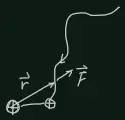
So the energy between these two particles is equal to W. This work is the same whatever the path of approach. For a system with N particles, total electrostatic energy is
Or we can write
Where? is the electric potential,?what we are going to introduce in chapter 2.
1.6 is an example of finding electrical energy in a crystal lattice, so I'll just skip this part.
1.7 Electric field
Suppose there are several charges?, and ?force on?another charge?
is:
If we define an electric field strength?vector:
The force on a charge is then
We can also consider continuous charge distribution of the source of the electric field,
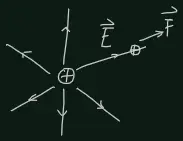
1.8 shows an example of continuous charge distribution, I'll skip again.
1.9 Flux
This part introduces the definition of flux of a vector field, which will be useful:
is the flux through the surface S.
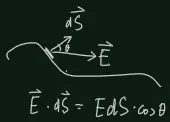
1.10 Gauss's law
The flux through a closed surface is proportional to total charge inside:
and we have?its differential form:
is Hamilton's operator,
To prove this law, we can first consider a single point charge? and a surface
. The electric field in the whole space is
And the flux through the surface is
where? is the total solid angle of?surface S. Obviously,
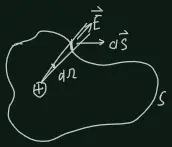
so we have
if there are many particles,
therefore,?
1.11~1.14?are?examples?using?Gauss's law, skip again. Here we focus on theoretical points instead of details of calculation.
1.15 Energy associated with the electric field
Suppose we create a spherical shell with total charge?. According to our theory in 1.5, this shell requires energy?
to assemble,
And electric field strength near the surface is
So we can discover that
where??is called energy density. This is also true for a complicated electrostatic system with different charge distribution in space. The proof is mentioned in Feynman's lecture, and it's quite hard, I'll just skip the proof.
It seems like this energy is?"stored" in the field. Our textbook discussed?the meaning of this theory...I can't understand and rehearsal well, so let's just see the text:
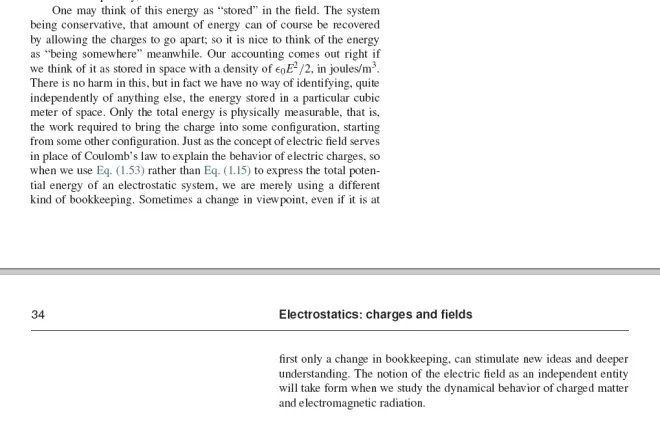
References
[1] Edward M. Purcell, David J. Morin. Electricity and Magnetism (Third Edition)[M]. Cambridge Univercity Press.
[2] Richard Feynman. The Feynman Lectures on Physics(The New Millennium Edition, Volume II). 上海:上海科學(xué)技術(shù)出版社,2013.4.

//幾乎是第一次寫這樣全英文的筆記
//真的太難了!朋友們支持一下吧

